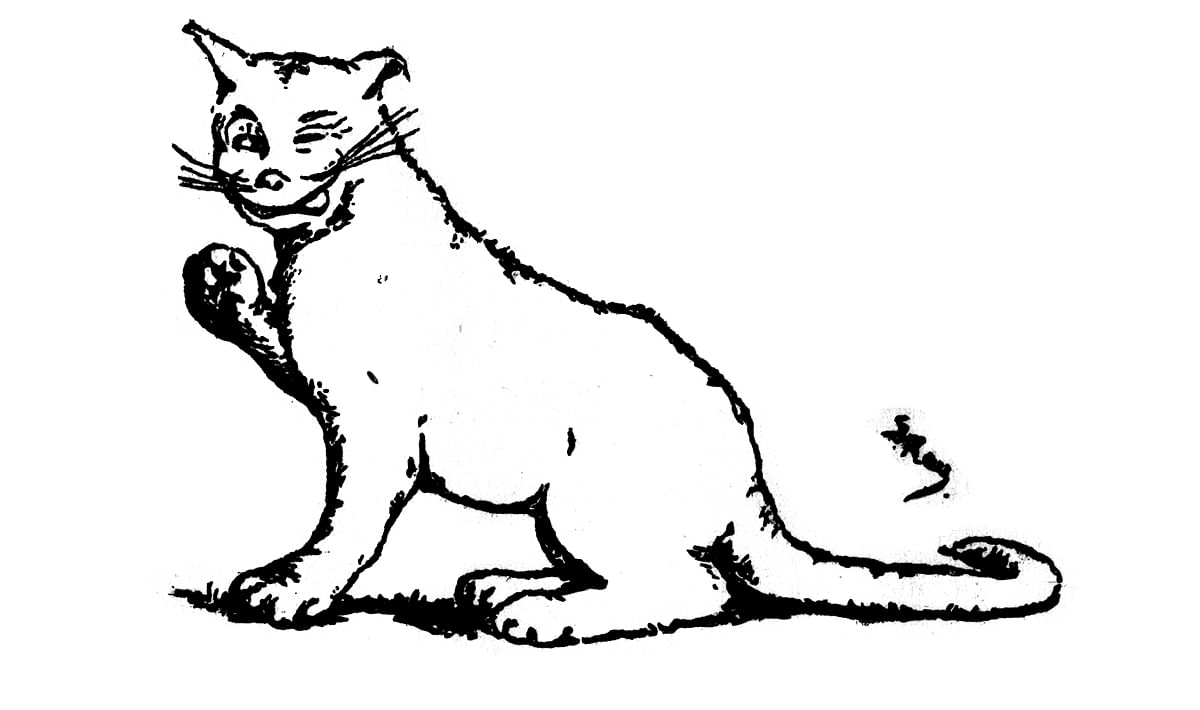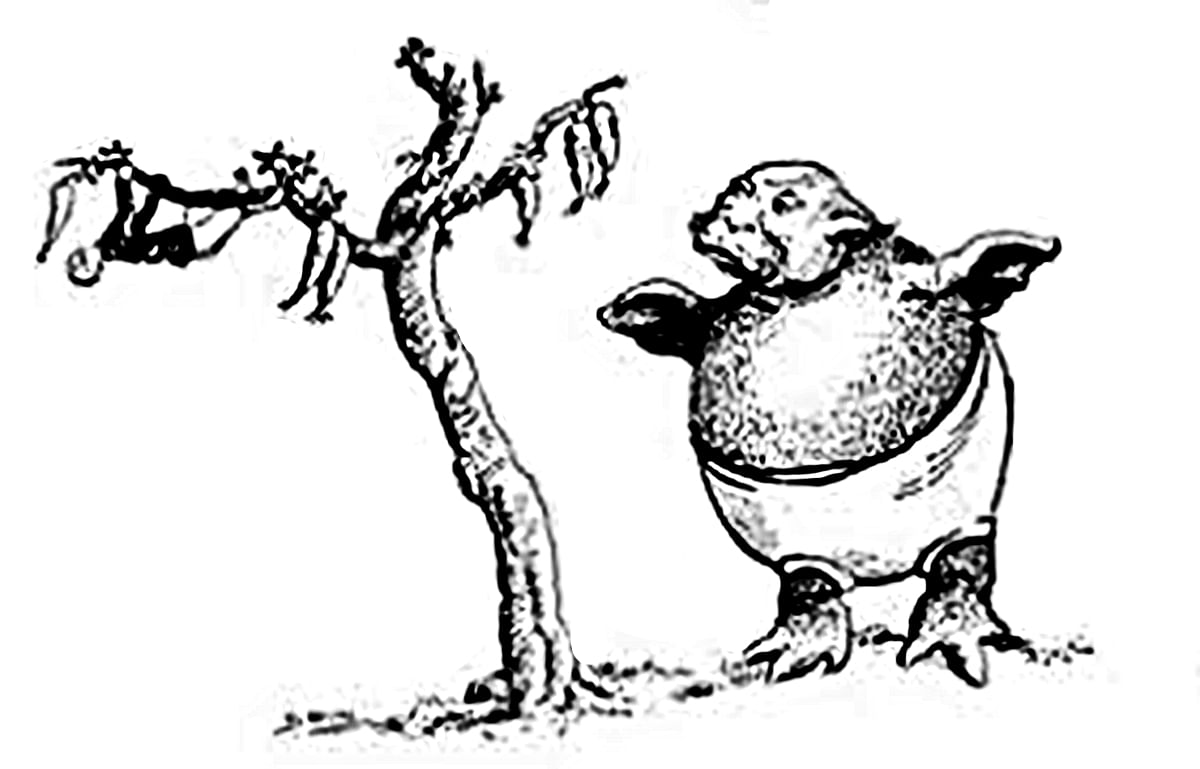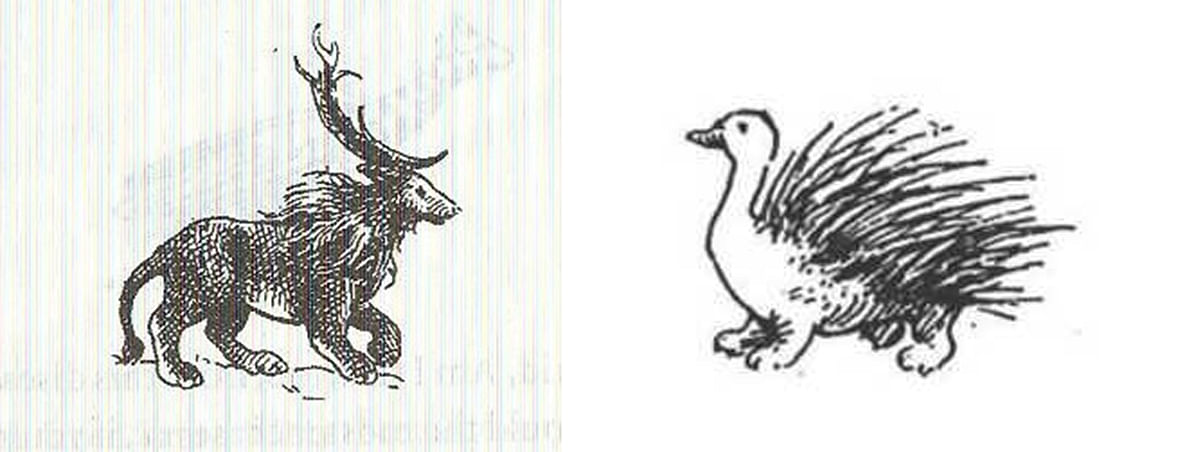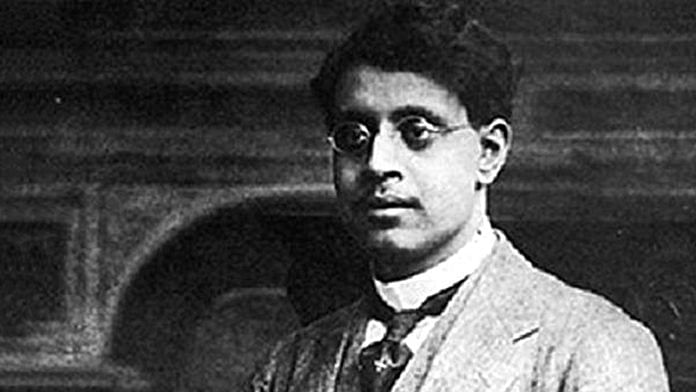New Delhi: Ask someone, ‘Who is the most famous Bengali poet?’ More often than not, the answer will be Rabindranath Tagore. However, ask a child the same question and the reply could be Sukumar Ray.
For decades, children have grown up reading the nonsense verses by polymath Sukumar Ray. His collection of poetry Abol Tabol (Rhymes Without Reason) and novella Ha Ja Ba Ra La (Topsy-Turvy Tales) are still some of the most popular children’s literature in circulation.

Creator of nonsense rhymes
For a child, Ray’s rhymes and stories open up a world of endless possibilities and imagery. For instance, Ha Ja Ba Ra La begins with a child’s handkerchief that transforms into a cat talking about semicolons.
The story also features a goat who talks of all things non-academic such as what a goat does not eat, a revered crow who measures the cost of time, and a rotund man who keeps changing the names of his family members.
Also read: Reading Dalit literature changes established accounts of nationalism, colonialism & modernity
Ray’s literature was the original Fantastic Beasts and Where To Find Them. However, it was far from the sanitised magical world that it appeared to children. Several of his poems are actually a satire on the Bengali babu — puerile, subservient and lover of all things colonial. For instance, the pot-bellied, lethargic Bengali man became ‘Kumropotash’ (pumpkin puff) in his tales.

His oeuvre comprised caricatures of every ‘social type’ from the period: Congressmen, clerks, ultra-nationalists, the Gandhi followers and policemen.
The poet was on his deathbed when he composed his most famous works. The freedom struggle was on in full swing and Bengali literature was reaching new heights, constantly defying traditions. He died on 10 September 1923 of an incurable (at the time) infectious fever in Kolkata.
After Ray’s untimely death at the age of 36, Tagore said: “I have seen many deaths, but I have never seen anyone like this young man who facing death nevertheless sang songs to life. Sitting beside his death bed I have heard that song and my heart is overflowing with it.”
The legend of the Rays
Ray was the eldest son of Upendrakishore Ray, also a children’s story writer and publisher. Born on 30 October 1887, Ray grew up during the peak years of Bengali renaissance. He grew up seeing his father write, paint, invent new technologies for printing and compose music. This was a Bengali Brahmo household that was riding into modernism, head held high.
Ray got his double degree in physics and chemistry from Presidency College (now a university) in Kolkata, before going to England to learn about printing and publishing. He took over the family’s printing press U. Ray and Sons and much-loved magazine Sandesh after his father passed away in 1915.
Under Ray, Sandesh became the legend that it is today. Limericks, stories, drawings, puzzles all featured in it.
Although in his later life he was immersed in literature and art, Ray never let go of his scientific temperament. For instance, when Halley’s Comet was seen in the Kolkata sky, he wanted his young readers to not be brainwashed by superstitions, so he wrote Proloyer Bhoye, an essay on doomsday theories.
Also read: Wicked witches and evil queens: Why children’s books need more female villains
“Had comets been a regular feature like the moon or the sun, then the hazy broom-like appearance wouldn’t have disturbed us. But they appear all of a sudden without any intimation; that is why men value them so much. All over the world men treat comets as an omen,” he said.
Ray would not stop at limericks, poems, and fantastical stories. With the new half-tone block printing technologies he invented, Ray would also illustrate his works. Such was the beauty and intrigue of his caricatures and drawings, that it has become impossible to imagine his works without them, just like it is unimaginable that one should read Lewis Carroll’s Alice in Wonderland without the accompanying John Tenniel drawings.
Ray’s nonsense verses were inspired by Carroll and Edward Lear, but he did borrow one more thing: The use of portmanteaus or combining the meaning and sound of two words. For instance, he created the Hansjaru (swan + porcupine) or the Singhareen (lion + deer).

Bengali literature will forever be indebted to Ray for his words and illustrations, a legacy carried forward by his son, acclaimed filmmaker and writer Satyajit Ray. But for most children, and the inner child hidden in most adults, Sukumar Ray’s works serve a delicious snack for the imagination and candy to nibble on when one is tired of being rational and following rules.



